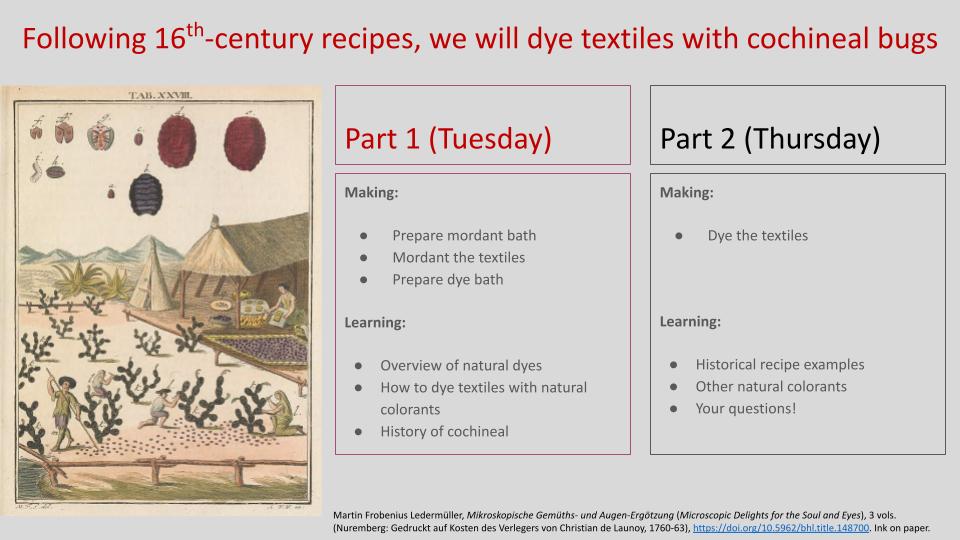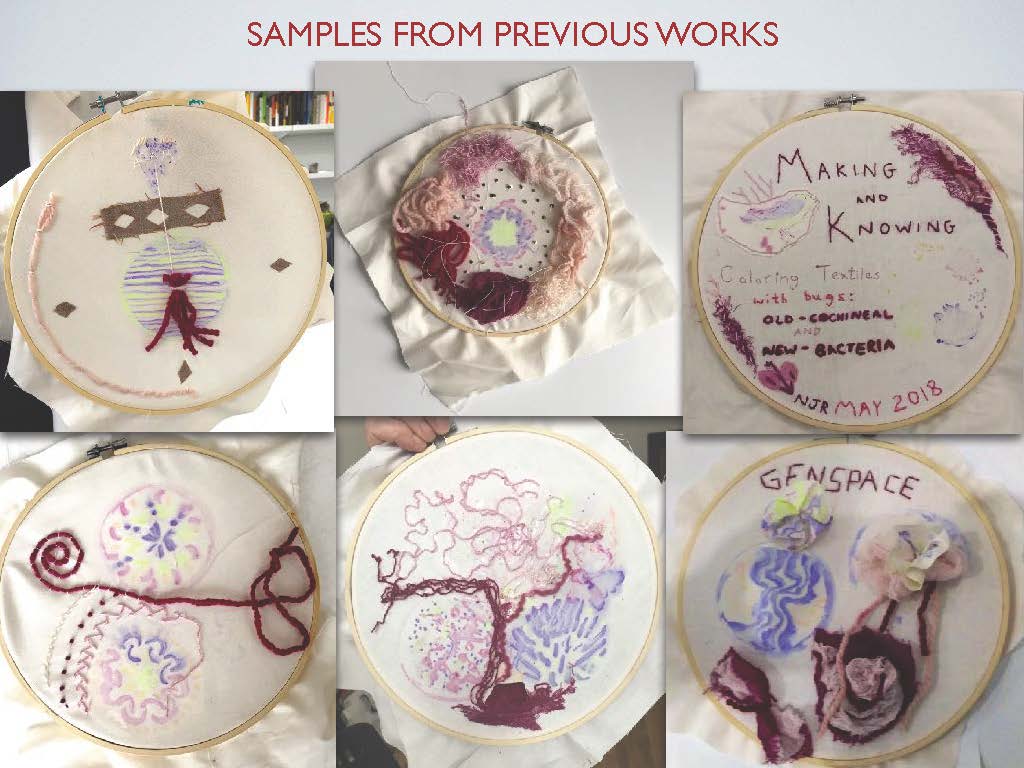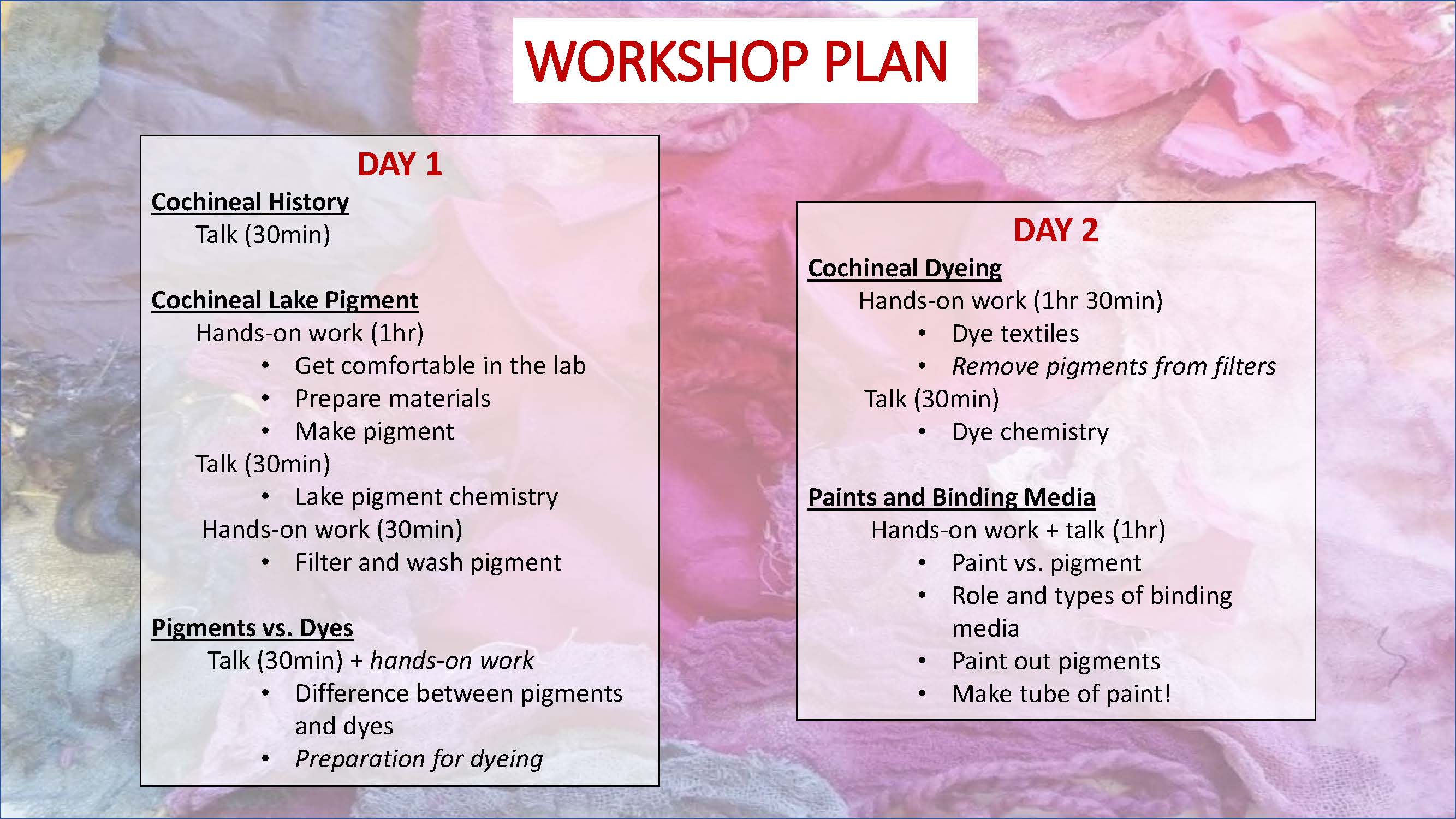M&K Resources in Use
Making and Knowing Resources in Use
The Making and Knowing Project has many collaborators from K-12 to university, to non-traditional schools and public outreach institutions, who have piloted the Making and Knowing Project’s methods, course elements, and lesson plans in their research projects, courses, and student activities. The fruits of their experience, their syllabi, student projects, and making activities are valuable for those seeking to integrate Making and Knowing resources into their teaching and research.
Collaborator Pilot Courses
Materials from courses taught by Project collaborators, some using resources from this Companion or developed in consultation with the Making and Knowing Project.
Experiment
Spring 2018, University of Oregon, Clark Honors College
Vera Keller, Professor of History
- Experiment Syllabus
- Course description: The course Experiment explores the origins of experimental science in early modern Europe (15th-18th centuries), and incorporates hands-on activities. In 2018, students researched Ms. Fr. 640 then read essays in Secrets of Craft and Nature. The class had the chance to Skype with current and former Making and Knowing students, who were able to answer questions and respond to critiques. The course included a number of experimental reconstructions, including a “Boyle’s Law” demonstration and growing of Seignette Salts. Students described the process of these experiments in a period voice (voice of Boyle or voice of the author-practitioner), and discussed what is at stake in the various literary technologies employed. For more on the various literary technologies, see Vera Keller, Four Manuscripts between the Recipe and the Experimental Essay.
Making and Knowing in the High School History Classroom
Sofia Gans, PhD, speaks about her experience teaching high school European history through hands-on reconstruction of historical techniques.
Science, Magic, and Alchemy (HST 306)
Spring 2020, Wake Forest University
Monique O’Connell, Professor of History
Monique O’Connell reflects on her interdisciplinary goals and experiences using the Making and Knowing Project’s Hands-on Lesson Plan for stucco-making.
Ingenious Making in the Early Modern World (ARTH 29)
Spring 2022, Oberlin College
Christina Neilson, Associate Professor of Art History
- Ingenious Making in the Early Modern World Syllabus (also available as DOCX)
- Course description: This course investigates what it meant to make things and work with materials, including featherwork, imitation gems, color making, and metal casting, in Europe and colonial Latin America between around 1350 and 1650. We will follow historical descriptions and recipes to reconstruct methods of making, and learn from expert practitioners who are holders of traditional techniques and meanings, including indigenous makers. We will consider how a wide range of practitioners developed hands-on knowledge in workshops, laboratories, marketplaces, gardens, etc. and we will explore how making was and is a form of knowledge, how there are different systems of knowledge, and the intersections between art making and science.
- Reflections on teaching Ingenious Making: In this video, Christina Neilson and Heather Galloway speak about their experience using the Making and Knowing Project’s Hands-on Lesson Plans in a class at Oberlin College.
- Sample student portfolio reports: Similar to M&K’s Fieldnotes, these portfolios document the students’ hands-on activities, which included Stucco for Molding, Molding Fruits in Sugar (Ms. Fr. 640, fol. 126r), and making and painting cochineal lake and verdigris pigments.
Art/Craft: Hands-on Global Histories of Materials, Techniques, and Skilled Making (VIZA 689)
Spring 2023, School of Performance, Visualization & Fine Arts, Texas A&M University
Graduate Special Topics Seminar
Dr. Tianna Helena Uchacz, Assistant Professor of Art History
Course description: This course investigates the materials, techniques, and meanings of craft through hands-on engagement with historical making practices. Classes combine seminar-style discussion of primary sources and contemporary scholarship with site visits and laboratory exercises in making skills, research skills, and writing skills. The course encourages students to consider relationships between making and thinking, nature and artifice, and art/craft and science by exploring issues related to textual, oral, and tacit knowledge, the significance of skill, and global histories of materials, tools, and practice. In Spring 2023, the Art/Craft seminar will focus on fibers and textiles as case-study materials.
Teaching Reflections and Tips from Texas A&M - Tianna Uchacz - course development and further reflection.
Global Art History Survey II (Renaissance to Modern) (ARTS 150)
Texas A&M University
Dr. Tianna Helena Uchacz, Assistant Professor of Art History
- Course description: A large lecture survey of architecture, painting, sculpture and the minor arts around the world from the 14th century to the end of the 20th century. ARTS 150 counts toward a Core Curriculum Creative Arts requirement and toward Intercultural Diversity course requirements.
- Teaching Reflections and Tips from Texas A&M - Tianna Uchacz - course development and further reflection, including ways to scale up hands-on activities for large classes.
Histories of Science and Technology in East Asia (EAAS W4110)
Spring 2018, East Asian Languages and Cultures, Columbia University
Lan Li, Lecturer & Presidential Scholar in Society and Neuroscience
- Histories of Science and Technology in East Asia Syllabus
- Course description: Students explored what it means for historians to engage in experimentation and the pedagogical value of burning, breaking, and substituting materials. Beyond reading texts, the course also involved a practical component as students engaged with knowledge production by actually making things. This practical assignment, in lieu of a written research paper, was modeled after the Making and Knowing Project. Reconstructions included armillary spheres, techniques for repairing ceramic, and a “simple and convenient x-ray.” The second practical component of the course involved translating broader research questions into a podcast. Podcasts include essays on plastic surgery, mapping mountains, and ritualized cremation. View the projects and podcasts on the course website.
- For Li’s reflection on the design and instruction of this course, see her Introduction on the course website.
Collaborator Workshops
Bio Art Workshops, Texas A&M University
Spring 2023, School of Performance, Visualization & Fine Arts
Naomi Rosenkranz, Dr. Tianna Uchacz, Dr. Donna Janes, Dr. Sumeyye Yar
This 4-day workshop was held in March 2023 at Texas A&M University. It was organized by Tianna Uchacz as a series of guest labs for her graduate course, Art/Craft: Hands-on Global Histories of Materials, Techniques, and Skilled Making. The labs were co-led by Naomi Rosenkranz (M&K) and Donna Janes (Microbiology, Texas A&M) in consultation with Sumeyye Yar. The activities, a 2-day dyeing workshop using cochineal insects, paired with a 2-day painting workshop using bioluminescent bacteria, built on workshops that Rosenkranz and Yar had developed and led at Genspace Community Lab, Brooklyn (described below). 10 faculty and 26 students from the College of Arts and Sciences, the College of Engineering, and the School of Performance, Visualization & Fine Arts took part.
RESOURCES
- Bio Art Workshop: Dyeing with Cochineal Bugs - participant resource page with presentations, handouts, and material sourcing
- Dyeing with Cochineal: Workshop Plan and Step-by-Step Instructions
- Presentation: Chemistry of dyeing and history of cochineal as a dyestuff
- Handout: mordant and dyestuff amounts for 12 different dyeing stations
- Handout: mordanting and dyeing process protocol
- News Item: Bio Art Workshops at Texas A&M University
- Poster: Bio Art Workshops at Texas A&M University

Refashioning the Renaissance Reconstruction Exchange
Naomi Rosenkranz, Dr. Sophie Pitman, Professor Paula Hohti, 2019
This workshop brought together two projects engaged in hands-on reconstruction to exchange methods and experiences on dyeing between the Making and Knowing Project and the Refashioning the Renaissance in March 2019. The Making and Knowing Project and Refashioning the Renaissance experimented with materials commonly used in the early modern period for dyeing red, including the widespread madder, the expensive kermes, and the potent cochineal.
RESOURCES
- Presentation: Reconstruction Exchange: Case Study in 16th Century Red Dyes - provides an overview of natural dyes as well as discusses the materials, chemistry, recipes, and processes for dyeing in early modern Europe.
- Red Dyes Experiment Page by Refashioning the Renaissance
- Workshop Blog Post by Refashioning the Renaissance
Genspace Community Science/Art Workshops
Coloring Textiles with Bugs: Old (Cochineal) and New (Bacteria)
Naomi Rosenkranz & Dr. Sumeyye Yar, 2018-19
Sponsored by the Center for Science and Society and Genspace Community Lab
Workshop description: Genspace Community Lab is a Brooklyn-based community lab that provides an open space for STEAM education, bringing together the arts and sciences in an educational setting, including a host of public workshops and classes. Developed and taught by Sumeyye Yar and Naomi Rosenkranz, a series of workshops were help at Genpace in May 2018, September 2018, December 2018, and November 2019. Yar and Rosenkranz received a Public Outreach grant from Columbia’s Center for Science and Society to design and hold workshops exploring colorant sustainability through renewed interest in old methods (dyeing with natural colorants) and new scientific breakthroughs (painting with pigmented bacteria) to combat the pollution and hazards of “fast fashion” and the textile industry. Each workshop was held over two days, 3-4 hours on each day, and combined interactive presentations and discussion, directed making sessions, and open creative time in the lab. Each participant created a hybrid textile collage with cochineal-dyed fabrics and and textiles printed with pigmented bacteria.
In this workshop, participants
- Learn about the history and chemistry of natural colorants and dyes
- Follow 500-year-old recipes from the Renaissance to dye wool and silk yarns with cochineal bugs
- Learn how genetic engineering and bacterial cultures can be used to replace synthetic dyes in the future
- Paint with bacteria and then print your designs on cotton
- At the end, combine printed microbial designs with hand-dyed cochineal textiles to create a decorative art piece to take home
RESOURCES
- Presentation: The Future of Textile Industry: Bacterial Colorants in Fashion
- Presentation: Overview of the history and chemistry of dyeing
- Presentation: Dyeing with Cochineal, Step by Step
- Handout: Mordanting and Dyeing Protocol

Dyeing and Painting with Nature: The Chemistry of Cochineal
Naomi Rosenkranz, April 2019
Building upon the workshop, Coloring Textiles with Bugs, Rosenkranz created another Genspace workshop that looked at both dyes and pigments made from cochineal.
- Workshop description: Join Genspace for a hands-on exploration of natural colorants where we will focus on the tiny but powerfully-colorful cochineal bugs. We will look at the fascinating history of cochineal use and the chemistry behind transforming organic matter into usable color, learning about the relationship (and differences) between dyes and pigments, and how you can make them in the lab or at home in your kitchen. Following 500-year-old recipes and using modern chemistry, we will learn three different methods for extracting the cochineal color. We will dye textiles and make pigments with bugs, and each participant will walk away with a tube of lab-made paint!
RESOURCES
- Presentation: Cochineal history and chemistry - Apr 2019
- Presentation: Lake pigments - Apr 2019
- Presentation: Dye chemistry - Apr 2019
- Process overview: dye vs. pigment
- Dyeing materials and step-by-step instructions - 2019 Apr
- Making of lake pigments and step-by-step instructions - 2019 Apr
- Making lake pigments from dyed silk thread
- Dyes: recipes, calculations, and template - Apr 2019 (XLSX)
HANDOUTS
- Handout: cochineal lake making
- Handout: cochineal dyeing process
- Handout: cochineal dye samples summary

Dyeing with Cochineal - A Short High-School Workshop
Reece Brown (undergraduate, Columbia University), Spring/Summer 2023
Created as her final project in the Making and Knowing Project course, Making and Knowing in Early Modern Europe: Hands-On History (HIST GU4962), Reece Brown designed and taught a workshop on dyeing with cochineal to high school students in an environmental science class.
- Workshop Description: This workshop explores cochineal from three different disciplines: biology, chemistry, and history. We will begin by discussing its life cycle and habitat, then pivot to focus on the particular compound for which it is known, i.e., carminic acid. The flow of this lesson follows the transformation of materials during the process of dyeing, turning cochineal from a resource to a material to a product. Every step in the “recipe” will be contextualized briefly prior to the hands-on endeavor, then more fully explored in a conversation as we wait for the materials to heat to the proper temperature. This outline lets the process and material reality come first, then provides more abstract information once students have oriented themselves in the world around them. It also provides productive instruction time during periods of stasis integrated throughout the process of dyeing.
- See the final project page for her workshop materials and reflection: Dyeing Textiles with Cochineal - A Short High-School Workshop.